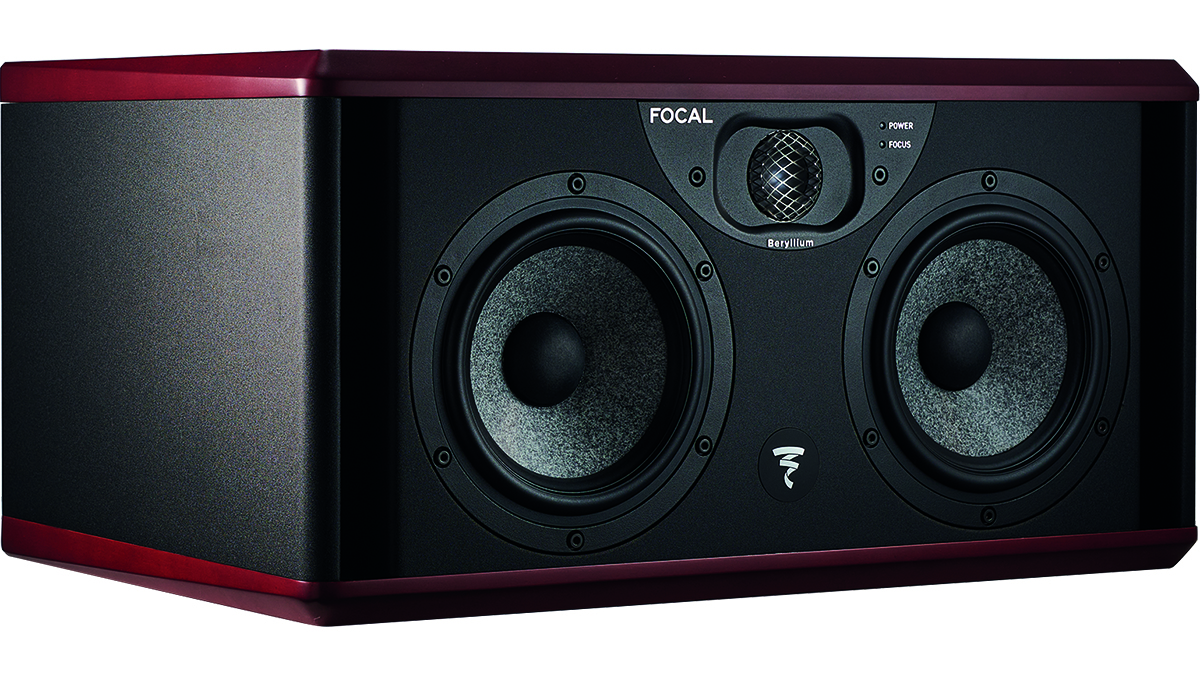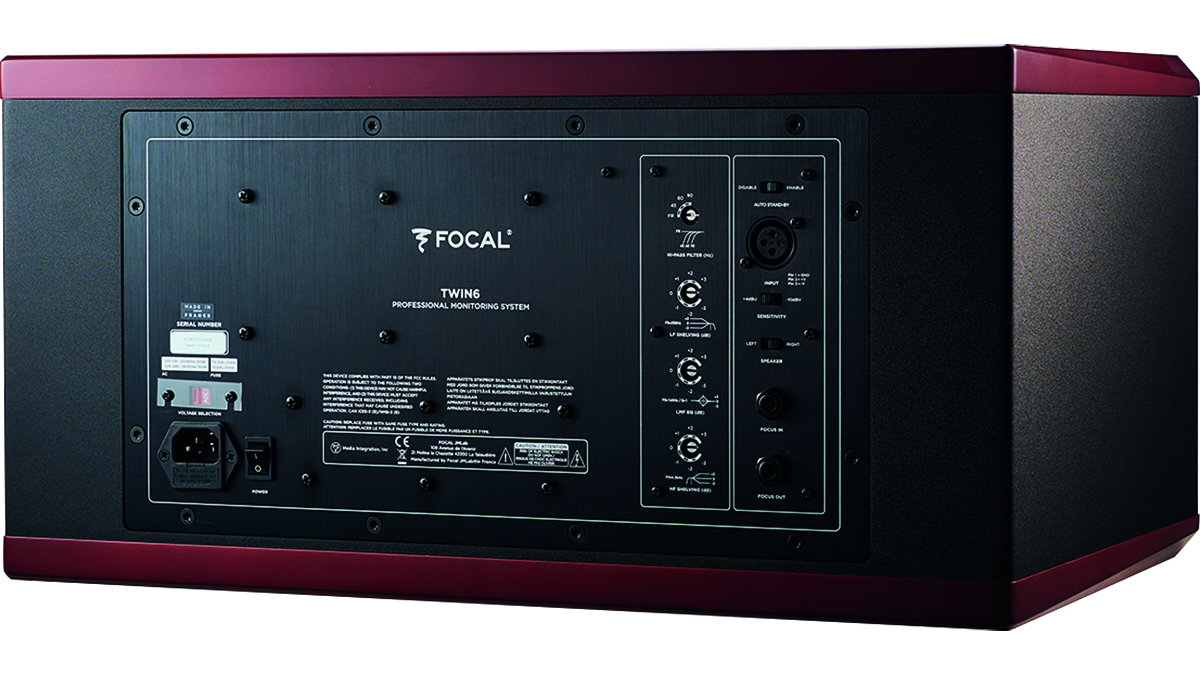MusicRadar Verdict
A worthy upgrade to their superb predecessors. Expensive, but we found build, materials and sound all AAA+ grade.
Pros
- +
Peerless construction and finish. Stunning to look at.
- +
Huge sound stage, gorgeously smooth with an exceptional level of clarity.
- +
Focus mode will appeal to many.
Cons
- -
Expensive.
- -
Relatively large for small, home studios.
MusicRadar's got your back
Focal ST6 Twin6: What is it?
The ST6 Twin6 is a reboot of the venerable Twin6 Be, an evergreen studio monitor in Focal’s pro range. Despite losing the ‘Be’ suffix, this new version retains its unusual Beryllium tweeter and gains an intriguing new feature, more of which later.
The new Twin6 looks familiar, clothed in its deep cherry veneer, but the cut is sharper and edgier than that of its predecessor. The finish is absolutely flawless too.
Although the Twin6 looks like a traditional 3-way monitor, with two woofers and a tweeter, it is in fact a less common 2.5-way system. Both woofers are the same size, and both handle bass, but only one of them reproduces the midrange before a high-frequency crossover point is reached and the Beryllium tweeter takes on top-end duties.
What’s the point? One of the advantages of a 2.5-way system over a 3-way system is that the woofers are typically smaller, in this case just 6.5 inches, yet can still deliver significant bass and better lobing patterns. They are also less prone to comb filtering than some 3-way systems and provide better on-axis summing than 2-way systems.
Perhaps most importantly, in real-world listening most users find they reproduce a more spacious soundstage than a 2-way system, without the huge expense and physical expanse of a 3-way system.
Not that the Twin6 is small or cheap. At more than half a metre wide, 34cm deep and weighing 22kg each, a pair of Twins will overwhelm most small studios. If, however, you’re flush with both space and spondoolies, but concerned about lack of bass (you needn’t be) then consider partnering them with Focal’s monster Sub12.

Focal ST6 Twin6: Performance and verdict
Setup is simple. Focal recommends putting them horizontally, and to help this a switch on the back panel will assign the mid-range to either woofer.
Want all the hottest music and gear news, reviews, deals, features and more, direct to your inbox? Sign up here.
Swapping our everyday 2-way monitors for a pair of 2.5-way Twin6s, the difference is immediately apparent. Placed horizontally, it’s the breadth of the soundstage that’s initially so striking. The stereo imaging is so much wider, reproducing a grander, multi-dimensional sound that puts our usual monitors to shame.
We could listen to them all day without a hint of fatigue
Once used to the additional width, we began to appreciate how smooth these monitors are, a characteristic of the reinforced bass. To our ears, the Beryllium tweeters give plenty of top-end detail too.

Nevertheless, these are magnificent monitors that excel at providing balance and clarity throughout their entire frequency range. Never artificial-sounding, boomy or harsh, we could listen to them all day without a hint of fatigue.
Provided that is, they’re not switched to Focus mode, which is the new feature we alluded to earlier. It switches 2.5-way to 1-way, transforming the sound of the Twin6 into ‘lo-fi’ territory. Yes, it will sound like they’re broken, but you’ll be able to judge the quality of your mix as if it’s played through a cheap TV, computer, car stereo etc.
Essentially it disables the tweeter and limits the bass frequency so that the Twin6 mimics something like a 1970s Auratone Cube. You’ll need a footswitch to turn Focus mode on and off, but any cheap latching pedal should do the trick. It’ll prove an invaluable feature for many users.
MusicRadar verdict: A worthy upgrade to their superb predecessors. Expensive, but we found build, materials and sound all AAA+ grade.
Focal ST6 Twin6: The web says
"Despite a couple of quirks the ST6 Twin6 is a very high‑performance monitor that delivers everything it promises."
Sound On Sound
Focal ST6 Twin6: Hands-on demos
FOCAL
Colt Capperrune
Sweetwater
Focal ST6 Twin6: Specifications
- Freq response (@ -3dB) full-range mode: 40Hz-40kHz
- Freq response focus mode: 110Hz-10kHz
- Max SPL: 112dB
- Input: Balanced XLR 10 kΩ
- Bass amp stage: 2 x 70W RMS; Treble amp stage: 50W RMS
- User controls: Sensitivity, stand-by, Left/Right, HPF, LF Shelf, LMF EQ, HF Shelf
- Woofers x 2: 165mm “W” cone
- Tweeter: 38mm Beryllium.
- CONTACT: Focal
When Simon's childhood classical guitar teacher boasted he 'enjoyed a challenge', the poor man had no idea how much he'd underestimated the scale of the task ahead. Despite Simon's lack of talent, the experience did spark a lifelong passion for music. His classical guitar was discarded for an electric, then a room full of electrics before Simon discovered the joys of keys. Against all odds, Simon somehow managed to blag a career as a fashion journalist, but he's now more suitably employed writing for MusicRadar and Guitar World. When not writing or playing, he can be found terrifying himself on his mountain bike.




